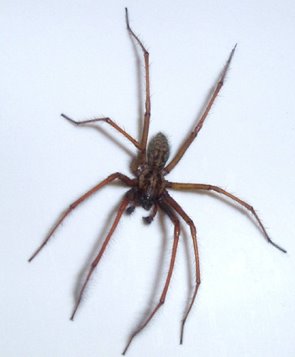READY TO GET STARTED?
REQUEST A FREE ESTIMATE
Fill out the form below or call (888) 466-7849 for a free, no-obligation estimate.
Bugs are no different than humans in that we’re all in search of 3 basic needs: water, food, and shelter. It’s important when trying to obtain a pest-free home that we are eliminating pest’s basic needs. Limiting their access to these items will be a big step in prevention AND maintenance.
So what steps do you take to eliminate these sources?
How to Eliminate Pest’s Water Sources From Your Home:
How to Eliminate Pest’s Food Sources From Your Home:
How to Eliminate Pest’s Access to Shelter From Your Home:
If pests have already found their way into your home it’s best to call a professional exterminator. A pest professional can properly inspect your property, identify the pest, identify the sources, effectively treat the home for the targeted pest, and work with you to develop a customized action plan to maintain and prevent further issues from occurring. If you’re in need of a professional pest control company call Northwest Exterminating!
 Spiders often get a bad reputation. They are creepy, crawly creatures and we fear their bite. They are often blamed for skin irritations but the fact is that 80% of presumed spider bites are actually due to some other insect bite or skin infection. Most spider bites are harmless and done by accident. However, there are spiders that can cause real harm (black widow, brown recluse). Not only can the bite be painful but the spider’s venom can cause pain as well. Non-venomous spider bite pain will typically last 5 minutes to an hour but a venomous spider bite can be painful for longer than 24 hours.
Spiders often get a bad reputation. They are creepy, crawly creatures and we fear their bite. They are often blamed for skin irritations but the fact is that 80% of presumed spider bites are actually due to some other insect bite or skin infection. Most spider bites are harmless and done by accident. However, there are spiders that can cause real harm (black widow, brown recluse). Not only can the bite be painful but the spider’s venom can cause pain as well. Non-venomous spider bite pain will typically last 5 minutes to an hour but a venomous spider bite can be painful for longer than 24 hours.
Seek medical attention if:
In rare situations, spider bites can cause allergic reaction. In this case, you should seek immediate medical attention.
If you are concerned about spiders in or around your home, call a professional exterminator to identify the problem and develop a customized plan to rid your home of spiders.
We know that bugs are gross and unsanitary but did you also know that they can be bad for our health. WebMD discusses some of the worst bugs and the potential harm they can do to our health:
Tips to prevent feeling the sting of these health issues:
For more information on these insects and their health hazards, visit WebMD: Bad Bugs Slideshow: Identifying Bugs and Their Bites.
If you think you may have been bitten or stung by any of the insects above, please take note of your body’s reaction and seek medical assistance immediately.
Last week it was the stink bug, this week it’s the carpenter bee! We told you that the weird temperatures were going to bring out these pests…and here they are!
It’s officially spring which means that carpenter bees are out in Atlanta and other southeastern areas. There is a good chance that you are seeing these large black bees along with the large black tunnels that they create in wood around your home. Those are carpenter bees that have been living in those holes and tunnels throughout the winter and are emerging in the spring time to find places for new nests, which can mean new holes and tunnels in your wood. Carpenter bees are often confused with bumble bees but differ slightly in appearance. The upper surface of the carpenter bee’s abdomen is bare and a shiny black color; while bumble bees have a hairy abdomen and yellow markings.
Carpenter bees drill through wood to build nests where they stay all winter and throughout the spring until they find a new nest or emerge to mate. Although male bees tend to be aggressive, often hovering around people who are near their nests, they are mostly harmless since they do not have stingers. On the other hand, females can inflict a painful sting but rarely do unless they are being handled.
You may find piles of wood underneath the hole where the bee has drilled their nest. Carpenter bees prefer to make their nests in bare, untreated or weathered wood. Wood that is painted or pressure-treated is much less susceptible to a carpenter bees nesting. Common areas for nesting include window trim, facia board, siding, wooden shakes, decks and outdoor furniture.
The best control for carpenter bees is to treat or paint all exposed wood surfaces. If you are using a spray, it is best to spray at night, while wearing protective clothing, when bees are less active to reduce your risk of being stung. Each hole should be treated individually if the bees are inside the holes. If they are not in the hole, seal or paint the hole so the bees cannot return.
As with most infestations, it is best to call a professional exterminator to ensure that the issue is taken care of quickly and thoroughly. Call Northwest Exterminating if you are seeing carpenter bees or other pests around your home.